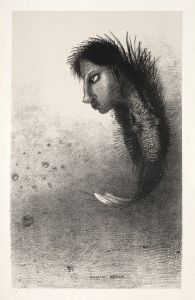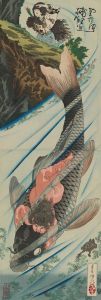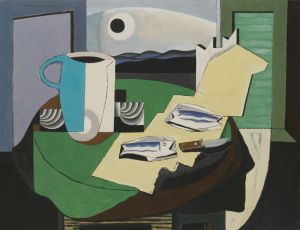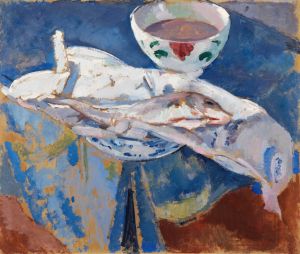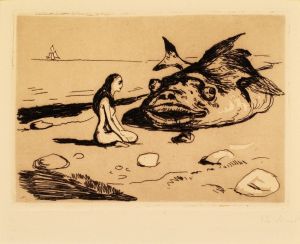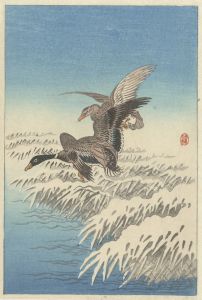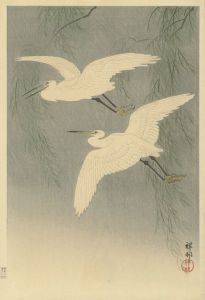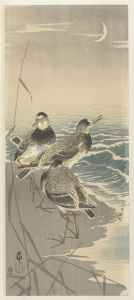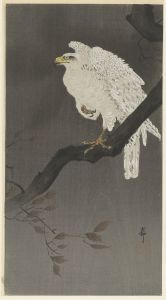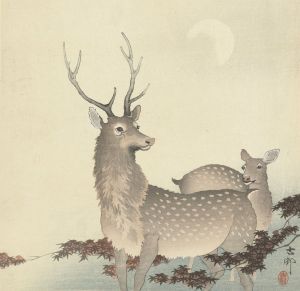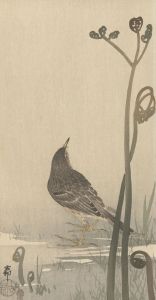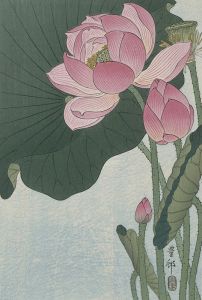
Two carps
A hand-painted replica of Ohara Koson’s masterpiece Two carps, meticulously crafted by professional artists to capture the true essence of the original. Each piece is created with museum-quality canvas and rare mineral pigments, carefully painted by experienced artists with delicate brushstrokes and rich, layered colors to perfectly recreate the texture of the original artwork. Unlike machine-printed reproductions, this hand-painted version brings the painting to life, infused with the artist’s emotions and skill in every stroke. Whether for personal collection or home decoration, it instantly elevates the artistic atmosphere of any space.
Ohara Koson was a prominent Japanese artist known for his exquisite prints of birds and flowers, a genre known as kachō-ga. Born in 1877 in Kanazawa, Japan, Koson was part of the shin-hanga movement, which sought to revitalize traditional ukiyo-e art with modern sensibilities. His works are celebrated for their delicate beauty and meticulous attention to detail.
"Two Carps" is one of Ohara Koson's notable works, showcasing his mastery in depicting nature with elegance and precision. This artwork features two carps, a subject that holds significant cultural symbolism in Japan. Carps, or koi, are often associated with perseverance and strength due to their ability to swim upstream and against strong currents. They are also symbols of good fortune and success.
Koson's "Two Carps" exemplifies his skill in capturing the fluidity and grace of these creatures. The composition typically portrays the carps in a serene aquatic environment, emphasizing their natural beauty and the tranquility of their movement. Koson's use of color and line work is subtle yet effective, creating a harmonious balance that draws the viewer into the scene.
The shin-hanga movement, which Koson was a part of, emerged in the early 20th century as a response to the decline of traditional ukiyo-e art. Artists like Koson sought to breathe new life into this art form by incorporating Western techniques and perspectives while maintaining the essence of Japanese aesthetics. This movement was characterized by collaboration between artists, carvers, and printers, resulting in high-quality prints that appealed to both Japanese and Western audiences.
Koson's work gained international recognition, particularly in the United States and Europe, where there was a growing fascination with Japanese art and culture. His prints were often exported and collected by art enthusiasts, contributing to the global appreciation of shin-hanga.
"Two Carps" reflects Koson's ability to blend traditional Japanese themes with a modern artistic approach. His attention to detail and the serene atmosphere of his compositions are hallmarks of his style. The artwork not only captures the physical beauty of the carps but also conveys a sense of peace and harmony, qualities that are deeply valued in Japanese art.
Ohara Koson's legacy continues to be celebrated today, with his works held in numerous collections and museums worldwide. His contributions to the shin-hanga movement and his ability to capture the essence of nature in his prints have solidified his place as one of the leading figures in early 20th-century Japanese art. "Two Carps" remains a testament to his artistic vision and the enduring appeal of his work.





